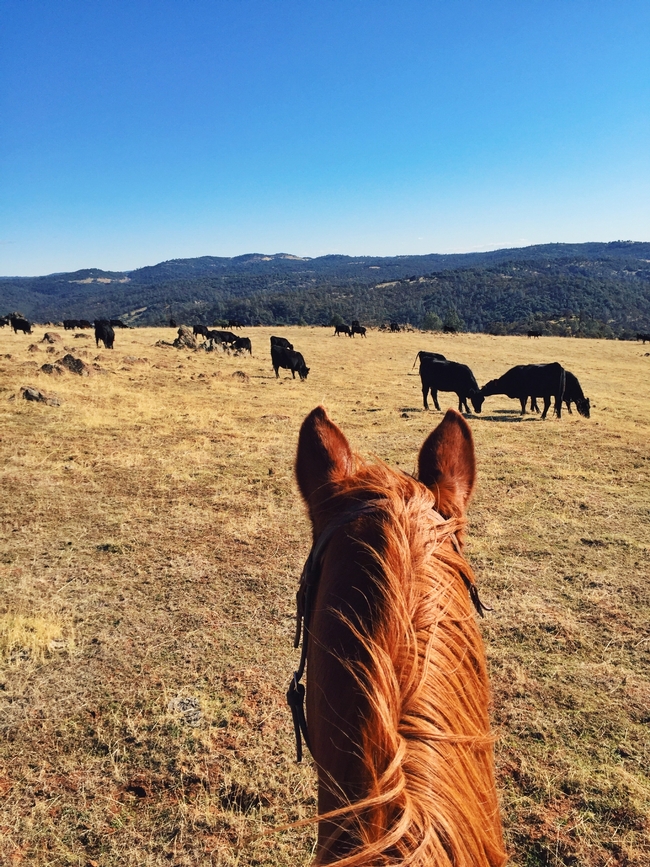Note: this is the third and final installment in a series of posts on nonlethal livestock protection tools. Click here to see the first in the series. All three posts are adapted from:
Macon, D.K, R.A. Baldwin, D.F. Lile, J. Stackhouse, C.K. Rivers, T. Saitone, T.K. Schohr, L.K. Snell, J. Harper, R. Ingram, K. Rodrigues, L. Macaulay, and L.M. Roche. IN PRESS. Livestock protection tools for California ranchers. Oakland: University of California Division of Agriculture and Natural Resources Publication 8598 (in press).
Sometimes, simply being in the right place at the right time can prevent depredation on livestock. Human presence, which can include hazing and other fright tactics, can modify carnivore hunting patterns and dietary preferences (Bangs et al. 2006).
Many large-scale sheep operations in California use herders to manage their day-to-day operations - these herders can be a predator deterrent. Individual ranchers, rancher associations, or nonprofit organizations may employ range riders. Range riders have mostly been used in areas with potential wolf-livestock conflicts, often with the specific task of disrupting predatory behavior. It has also been suggested that low-stress stockmanship techniques can re-instill herd instinct in cattle.
While there is little empirical evidence regarding effectiveness of range riders, herders, or stockmanship techniques, ranchers perceive the benefits of range rider programs to include depredation mitigation, increased management and information on livestock, rapid carcass identification, and a variety of social benefits (including reduced stress, reduced trespass and littering, improved public perception, and trust building). Range riders can also provide additional tools beyond simply being present on the landscape, including carcass removal, treatment of injured or sick animals, and stockmanship (Parks 2015).
On the other hand, wolves, especially, may become habituated to seeing humans, avoiding areas where they see humans during daylight hours and returning at night (Parks 2015; Williams personal communication 2016). Varying the pattern of human presence appears to be critical to preventing habituation. Finally, range rider programs may be cost-prohibitive in the long term. Most existing range rider programs are funded through combination of grant funding (from nonprofit organizations and/or government agencies) and in-kind contributions from ranchers (e.g., housing, horses or ATVs, investment of time, etc.). Ranchers who have participated in range rider programs in the northern Rocky Mountains perceive the costs to outweigh the benefits (Parks and Messmer 2016).
If you're interested in learning more about the nuts-and-bolts of range riding as a predator protection technique, Defenders of Wildlife is offering a 2-day range rider school near Chester, CA on February 20-21. Contact me at dmacon@ucanr.edu if you'd like more information.
Obviously, the tools I've described in this series of blog posts fit some situations better than others. Predator behavior, like livestock and human behavior, is dynamic. Predators can become habituated to some tools; as producers, we have to adapt our strategies to these changing conditions. For example, we've used llamas to protect small groups of sheep at our home place. Eventually, the coyotes learned that our particular llama wasn't a threat - and we lost a ram. Our adaptation at home was to night pen the sheep. On the other hand, our particular combination of livestock guardian dogs and electric fence on our leased pastures has been highly effective.
For more information, be sure to check out the Livestock-Predator Info Hub at http://rangelands.ucdavis.edu/predator-hub/. And please share your experiences in protecting your livestock!
